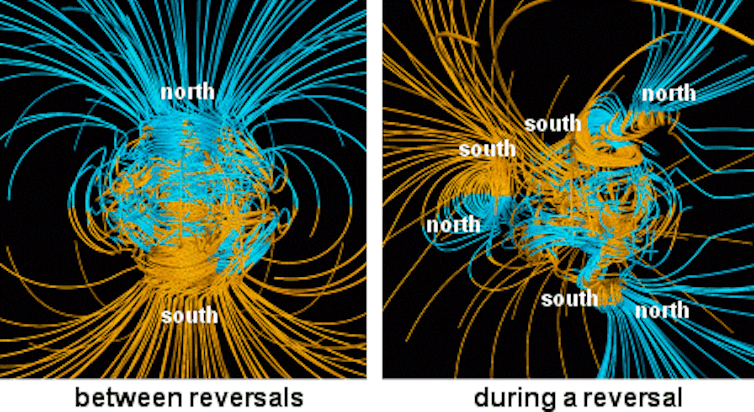By Tom Koulopoulos, the founder of the Delphi Group, a
25-year-old Boston-based think tank.
PUBLISHED ON: APR 23, 2018 at https://www.inc.com
The refrain of, "if it's free then you are the
product," has become part of our common vernacular.
Clearly, nothing is free, it's only the currency in which we
pay that differs.
While the price paid for the use of social media may not be
coming out of your bank account, it is most certainly coming out of something
that is quickly turning into the single most valuable long-term commodity of
the 21st century--your digital self.
Your Digital Self
Your digital self is the collection of data that intimately
describes you in a way that makes it possible to model your current behaviors
and to predict your future behaviors. You build it every time you browse,
communicate, or transact with hundreds of online interactions, from your Gmail,
to your Facebook posts, to the what you buy on Amazon.
I'm fascinated by how the notion of a digital self is
evolving. So much so that in an upcoming book, Revealing The Invisible: How Out
Digital Behaviors Became the Most Valuable Commodity of the 21st Century, I
look at how they aren't limited to just people. In fact, any object, machine,
or even ecosystem that exhibits complex behavior that can be captured through
sensors, algorithms, and computers can have a digital self.
The good news is that, as it stands now, your digital self
is still horribly disconnected with no single owner to make sense of it all.
Even the insights garnered by a Cambridge Analytica to target and manipulate
individual sentiment, use an incredibly slim slice of your digital self. I'd
estimate that even for the most diehard Facebook users less than 5 percent of
online interactions are captured by Facebook. Still, that's enough to provide
some telling insights into who you are.
For example, the initial Cambridge
University research that was the basis for the devious app Cambridge Analytica
used to manipulate political tendencies, could predict intelligence, sexual
orientation, and political leaning with 85-95% accuracy from something as
simple as the foods or products you liked. (i.e. if you like curly fries you're
likely very intelligent.)
Perhaps what's most surprising is that none of this should
surprise us. We've been giving up our identity, habits, and behaviors with
utter abandon for some time. Nobody would walk up to a stranger and offer up the
contents of their email correspondence, few would even do so with their closest
friends, relatives, or even a spouse. Yet 60 percent of us have Gmail accounts
which are scoured relentlessly for hints about who, where, and how we are.
Although Google anonymizes you in the process, the thread that ties my digital
self to my identity is never lost.
(TIP: If you want to get a sense for just how much Google
already knows about you just go to https://myactivity.google.com/myactivity.
You can do the same with Facebook at https://www.facebook.com/ads/preferences.
The app Deseat.me also provides a glimpse into how many third parties you are
sharing information with. In all three cases the results are just the tip of a
vast collection of data about your digital self.)
Targeting markets based on behaviors is nothing new.
Monetizing access to buyers has been the foundation of every media outlet. In
fact, I'd go so far as to claim that what's today called surveillance
capitalism has been with us in one form or another for the last 200 years and
is the funding mechanism for a free press in a free society.
What is new is the ability to target based on each
individual, not by guessing their motives and drivers, but rather by observing
and revealing every previously invisible behavior of their digital self.
It turns out that while we may not mind giving away our
digital selves, as evidenced by how willing we are to use social media to post
some of the most intimate moments of our lives, we have yet to define exactly
where to draw the line between what constitutes value versus violation.
However, our behaviors have become increasingly transparent
throughout history. Not because some dark entity was profiting from them, but
because greater transparency was something that had far-reaching benefits for
society and individuals.
The Fine Line Between Value and Violation
A good example is one of the first and still most widely
used publicly available methods for tracking behavior, GPS. The global
positioning system that today uses a series of twenty-four satellites to
precisely pinpoint the location of GPS-equipped objects had been used since
1978 by the U.S. Military.
However, it wasn't until 1983, in the aftermath of the
Soviet downing of Korean Air flight 007, which had accidentally wandered into
Soviet airspace, that U.S. president Ronald Reagan ordered GPS be opened to use
by private industry. Although the military had restricted private access to
certain GPS data, in 2000 President Bill Clinton made all GPS data accessible to
private industry.
So, does GPS value or violate your privacy? Clearly, some
privacy has been lost through its use, but few of us would disagree that its
value to us as individually and its overall value to society, in creating a
safer world, more than makes up for the privacy lost.
I'm not discounting privacy as an inconsequential issue. It
will require new levels of diligence and new means of protection--yes,
undoubtedly even legislation, but progress is always about the net positive
that comes out of any new technology.
The fact is that our digital selves will create both value
and risk. We can use technology and legal approaches to protect ourselves and
safeguard them, but there's simply no way to eliminate all of the risk. In
fact, it's a safe bet that the risk of having a digital self that makes us
vulnerable to manipulation and exposes us to malicious actors will increase
substantially.
10 Billion Digital Citizens
We clearly have much to do in protecting our digital selves.
Ultimately, there's little doubt in my mind that we will view our ownership
over our digital behaviors just as seriously as we do the immutable right to
the ownership of property. But we need to be just as vigilant in exploiting the
value that our digital selves can create, for us individually and for society,
as we are of their potential for abuse.
Consider, for example, that of the seven billion people who
inhabit our planet at least half do not have the right to an irrefutable
identity, without which they cannot participate in the benefits, rights, and
protection of a free society. If you don't think that's a problem please think
again. An immutable digital persona could have the single greatest impact on
society since the advent of property rights.
The opportunity to use our digital selves for interaction,
collaboration, innovation, personal safety, community building, giving a voice
to those otherwise disenfranchised humans who live in isolation and whose
plight has been easily ignored or silenced, and the creation of global economic
value for all, are incredibly positive advances in the human condition as well
as the evolution of a just and prosperous society.
While this is the direction that we are taking, we are still
far from it.
Will that come with risk? Of course. But we need to accelerate
our ability to build these digital selves in order to not only understand the
nuanced and invisible behaviors of, and among, people, machines, and
ecosystems, but also to create a world in which there is opportunity for ten
billion people to participate as digital citizens of a global society in which
identity becomes an immutable right that crosses national and geographic
boundaries.
I'm convinced, that our digital selves, and those of the
machines and ecosystems with which we share our planet, hold the answers to
some of the toughest challenges we will face, from economic inequality, to
pandemics, to climate change. In many ways, harvesting, understanding, and
protecting them may be a survival mechanism for the immense complexity of the
problems we need to solve in the 21st Century.
Our digital selves are anything but free. Revealing and
finding the patterns in the otherwise invisible behaviors they form may
ultimately be one of the most valuable things we ever do.

